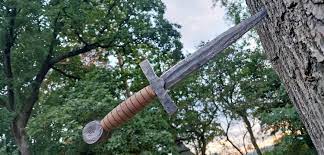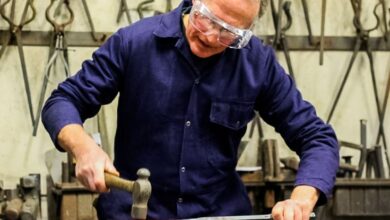What Makes a Sword Making Experience Special?

A Complete Guide to an Authentic Sword Making Experience
Introduction: What Makes a Sword Making Experience Special?
A sword making experience is more than just a crafting activity—it’s a hands-on journey into ancient craftsmanship, metallurgy, and cultural history. Whether done in a professional forge or through a guided workshop, creating a sword from raw metal offers a deep appreciation for the skill, patience, and artistry of traditional bladesmiths. This guide explains what to expect, how the process works, and why this unique experience is growing in popularity.
1. Understanding the Art of Sword Making
Sword making dates back thousands of years, with each culture developing its own forging techniques. A modern sword making experience often combines historical methods with safe, supervised practices. You’ll learn the basics of forging steel, shaping a blade, and understanding its balance and strength—skills that were once essential for warriors and craftsmen.
2. What Usually Happens During a Sword Making Experience
2.1 Choosing the Metal
Most workshops use high-carbon steel because it creates a strong, flexible blade. Instructors explain how carbon levels affect sharpness, durability, and heat treatment.
2.2 Heating and Forging
This is the heart of the sword making experience.
You heat the steel in a forge until it becomes red-hot and workable. Under guidance, you hammer and shape the blade, learning how each strike influences the final form.
2.3 Grinding and Shaping
Once the initial shape is forged, the blade is ground to refine its edges, remove imperfections, and achieve a smooth profile.
2.4 Heat Treatment
To make the sword strong, it must be hardened and tempered. Instructors demonstrate how controlled heating and cooling affect the blade’s flexibility and toughness.
2.5 Handle and Finishing Touches
The handle materials—often wood, leather, or cord—are shaped to fit your hand. You may also learn techniques like polishing, engraving, or adding decorative elements.
3. Skills You Learn From a Sword Making Experience
A well-designed sword making experience teaches more than metalworking. Participants often come away with skills such as:
- Understanding the physics of blades
- Using traditional tools like anvils, hammers, and grinders
- Practicing precise, controlled craftsmanship
- Learning patience and attention to detail
These lessons make the process rewarding even for beginners.
4. Who Can Enjoy This Experience?
You don’t need prior smithing knowledge. Most workshops are built for:
- History enthusiasts
- Fantasy and gaming fans
- Cosplayers
- Craft lovers
- Anyone curious about ancient skills
Because sessions are supervised, they are safe and accessible for most adults.
5. Why People Love Sword Making Workshops
The appeal of a sword making experience comes from blending creativity with tradition. You walk away with a real sword you crafted yourself, but also with a deeper appreciation for craftsmanship. The hands-on process is immersive, challenging, and incredibly satisfying.
Conclusion
A sword making experience is an unforgettable way to step into the world of traditional craftsmanship. It’s educational, engaging, and empowering—allowing you to create a functional piece of art while learning the secrets behind centuries-old forging techniques. Whether you’re a hobbyist or simply curious, this experience offers a unique combination of history, skill, and creativity.
FAQ: Sword Making Experience
1. What is a sword making experience?
A sword making experience is a guided workshop where participants learn to forge, shape, and finish a real or replica sword under the supervision of a professional bladesmith.
2. Do I need prior metalworking skills?
No. Most sword making experiences are designed for beginners and start with basic instructions, making them suitable even for people who have never worked with metal before.
3. How long does the process take?
A typical sword making experience can last from a few hours to multiple days. Short workshops focus on blade shaping, while multi-day sessions allow you to complete the entire sword.
4. Is it safe?
Yes—when done in a supervised environment. Instructors provide safety gear, demonstrate tool use, and ensure all forging steps are performed safely.
5. What type of sword can I make?
Depending on the workshop, you might craft a small knife, short sword, or full-sized blade. The options vary by location, tools available, and experience level.
6. Can I take the sword home?
Most workshops allow you to take home your completed blade after the sword making experience, as long as local laws permit.
7. How much does a sword making experience cost?
Prices vary widely. Short sessions may cost between $100–$300, while full, multi-day sword forging experiences can range from $500 to over $1,500.
8. What should I wear to a workshop?
Wear closed-toe shoes, long pants, and clothing made from natural fibers like cotton. Safety equipment such as gloves and goggles is usually provided.
9. Is the sword fully functional?
Many full-length swords made during multi-day workshops are functional. However, shorter or beginner workshops may focus on decorative or practice blades.
10. Who typically joins a sword making experience?
Participants include hobbyists, history buffs, fantasy fans, cosplayers, and anyone interested in learning traditional craftsmanship.


